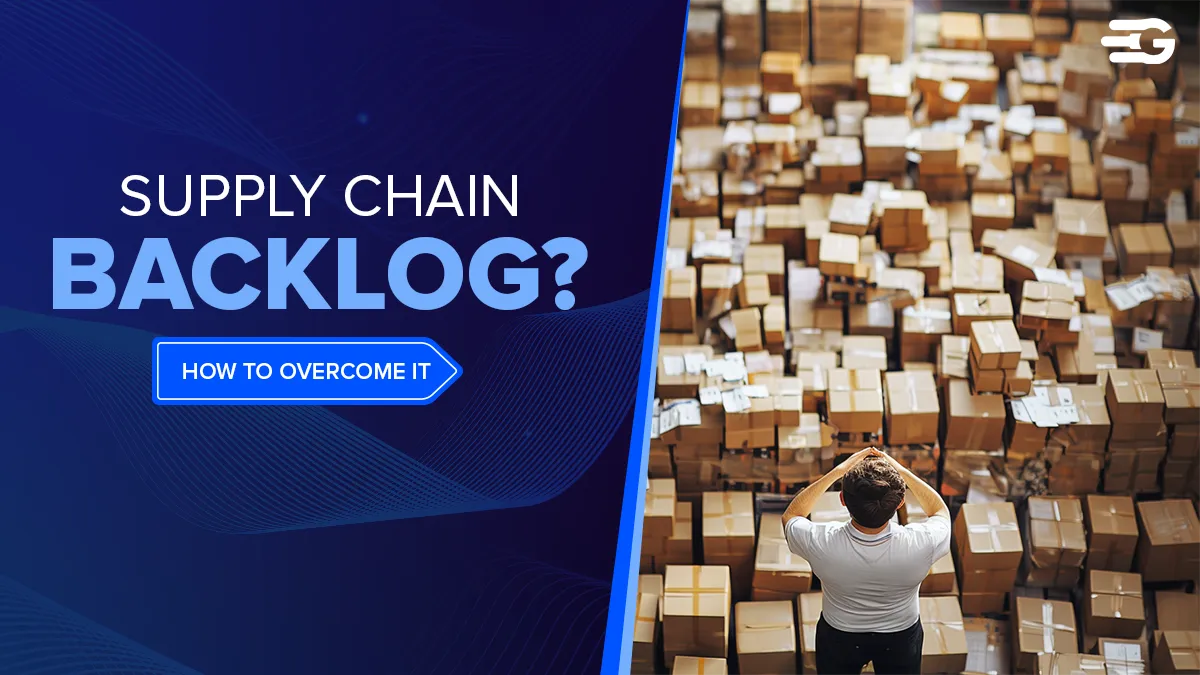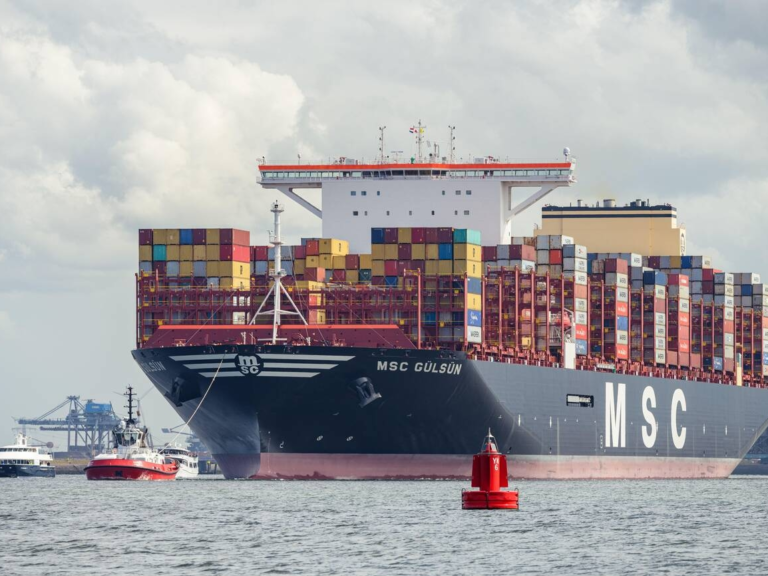Addressing Supply Chain Backlog in Today’s Market
Addressing Supply Chain Backlog in Today’s Market
In today’s fast-paced world, where customer expectations change overnight and global trade is the norm, a well-oiled supply chain is the backbone of any successful business. However, unexpected delays and disruptions can throw a wrench into the works. One such challenge that can cause headaches for businesses and customers alike is the supply chain backlog. This blog post will guide you through understanding and overcoming this hurdle, providing practical strategies and solutions to navigate the complexities of the modern supply chain.
Here, we’ll break down the causes of supply chain backlogs and equip you with actionable steps to mitigate them. By implementing these strategies, you can ensure a smoother flow of goods and keep your customers happy. So, whether you’re a seasoned business owner or just starting, this blog post will equip you with the knowledge to navigate the ever-evolving world of supply chain management.
Defining Supply Chain Backlog
It might indeed seem a bit unusual, but knowing the backlogs and backorder differences would be valuable for anyone involved. Here’s a clear breakdown:
Backlog: Imagine a truck that is overloaded with carriage orders that have not been met to their expectation. Due to a backlog of outstanding deliveries, that consist of production delays and material shortages, production bottlenecks are caused by an alternating sequence of blocking and passing. One of the worries might be that the customers will have to wait while the items are being delivered without an exact delivery time.
Backorder: This occurs when a certain product is so in demand that the people buying are many and the total number of those products available in the market is small concerning the demand. Customers can still put in their orders, but they will be asked to be patient as they wait for the products to arrive and given an estimated date of delivery as a guideline. It is like buying the stuff beforehand – you know, that you will be getting those soon but not right away.
The key takeaway? Logjams indicate the failures of the system, whereas order restrictions reveal certain products running out of stock. The instability of the supply chain can cause customer inconvenience; however, comprehending the difference helps in managing expectations and in making decisions in the supply chain more effectively.
Understanding the Backlog Phenomenon
Understanding the common causes of backlogs is crucial for both preventing their occurrence and developing effective mitigation strategies. Smart Warehousing and Cogsy highlight several key factors that can contribute to supply chain backlogs:
Inventory Mismanagement: Forecast miscalculations, unsophisticated storage, and transportation systems, as well as over or under-stocking can cause piles of goods to accumulate. Bad forecasting can create dilemmas, because you may not have enough inventory to meet the spike in demand, or inefficient storage may lead to supply problems later. Overstocking fastens up the cost of the business in terms of the required financial and warehouse space; at the same time, understocking can produce stockouts and delayed deliveries.
Disruptions in Production or Transportation: One of the unforeseen complications that can happen is the loss of labor with the problems of raw material scarcity and transportation delay. These can affect the supply. With strikes of labor, natural disasters, and political instability, the production of goods is likely to be at a standstill. Apart from this, problems like port congestion, not enough shipping containers, or bad weather can increase the stockpiling in separate points of the supply chain hence creating a ported delay.
Demand Surges: In a store, for example, the food that requires a longer time to prepare and cook, may cause that there are no tables with dish available until it is prepared, leaving customers for a long time without a table. For instance, a new product release might trigger one market trend, or maybe unpredictable market changes can influence another one, or finally variation in seasons can become the third factor. The inability of the company to increase production in the scale or the transportation capacity fast enough in reaction to a surge in demand will surely result in backlogs.
Also Read: Supply Chain Planning Explained: Key Concepts and Processes
The Business Impact of Supply Chain Backlogs
Backlogs don’t just disrupt operations; they can significantly impact your business financially and damage your reputation in the eyes of customers. Here’s a closer look at the two-pronged attack of backlogs:
Financial and Operational Implications
Backlogs can lead to a domino effect of negative consequences for your business. Increased storage costs arise due to the need to hold onto unfulfilled orders, lost sales opportunities occur as customers turn to competitors who can deliver faster, and production slowdowns can happen due to a lack of materials or components caught up in the backlog. Additionally, managing backlogs consumes valuable time and resources that could be better spent on core business activities.
Customer Experience and Brand Reputation
Delayed deliveries and order fulfillment issues can lead to frustrated customers and negatively impact brand image. In today’s digital age, customers expect fast and reliable delivery. Backlogs can erode customer trust and loyalty, leading to negative online reviews and a tarnished brand reputation. Social media can amplify the negative impact, making it even more critical to address backlogs swiftly and effectively.
Strategies to Manage and Mitigate Backlogs
The good news is that backlogs can be managed and prevented with proactive strategies that address the root causes. Here, we explore some key approaches:
Proactive Inventory Management
As suggested by Cogsy and EliteOps, implementing forecasting techniques that leverage historical data, market trends, and industry insights is crucial. This allows you to anticipate demand fluctuations and maintain optimal inventory levels. Optimizing warehouse space utilization through proper slotting techniques and implementing lean inventory management principles can further streamline operations and prevent stockouts that contribute to backlogs. Additionally, maintaining safety stock levels for critical items can act as a buffer against unexpected demand surges or supply disruptions.
Enhancing Order Fulfillment Processes
Streamlining order fulfillment processes is vital for managing backlogs and ensuring on-time deliveries. Fidelitone emphasizes the importance of automation, clear communication with customers, and efficient picking and packing procedures. Implementing warehouse automation solutions like automated storage and retrieval systems (AS/RS) or picking robots can significantly improve efficiency and reduce picking errors. Additionally, clear communication with customers regarding potential delays due to backlogs helps manage expectations and minimize frustration. Finally, efficient picking and packing procedures that minimize errors and optimize picking times can significantly speed up order fulfillment and reduce the backlog. Streamlining returns processing can also help free up warehouse space and expedite the fulfillment of new orders.
Technology’s Role in Resolving Supply Chain Backlogs
Leveraging Automation and Data Analytics
The fight against backlogs requires a two-pronged attack: real-time visibility and proactive planning. Automation and data analytics join forces to become your supply chain’s secret weapon, granting you the ability to predict and prevent disruptions before they snowball into dreaded backlogs.
Imagine a robust Warehouse Management System (WMS) acting as your all-seeing eye. It grants complete visibility into inventory levels, order status, and warehouse operations, allowing you to identify potential bottlenecks before they cause delays. This empowers data-driven decision-making. Think of it as a real-time control center, where you can strategically deploy resources to address issues proactively.
Transportation Management Systems (TMS) join the fray, optimizing transportation routes and tracking shipments with laser focus. Potential delays are identified swiftly, allowing you to take corrective action and keep customers informed. Imagine your shipments as arrows, each one tracing the most efficient path to its target – all thanks to the guidance of TMS.
Now, let’s focus on the mastermind behind this proactive operation: data analytics.
Data analytics goes beyond simply reacting to situations; it empowers proactive management to prevent backlogs altogether. Here’s how it works:
Demand Forecasting: By analyzing historical sales records, market trends, and even social media sentiment, data analytics can accurately predict demand patterns, especially in the long term. This foresight helps you prevent unnecessary inventory buildup and maintain a healthy turnover, effectively reducing the risk of backlogs.
Early Warning System: Data analysis can forecast disruptions among your network of service providers, like port congestion or material shortages. With this advanced information, you can implement mitigation strategies, such as finding alternative suppliers or adjusting shipping routes, to prevent disruptions from snowballing into backlogs.
Warehouse Optimization: Analyze data like picking and packing times to identify areas that consume excessive time and require improvement. By pinpointing inefficiencies in the order fulfillment process, you can implement corrections that enhance warehouse efficiency and lower the risk of delayed product shipments.
In essence, leveraging automation and data analytics transforms you from a reactive to a proactive player in the supply chain. You gain the ability to forecast events, improve ordering processes, and ultimately build customer loyalty through consistent on-time deliveries. This data-driven approach minimizes backlogs and ensures a smoother flow of goods throughout your entire supply chain.
Also Read: A Guide to Supply Chain Analysis for Improved Performance
Future-Proofing Against Supply Chain Backlogs
Building a Resilient Supply Chain
In an environment with ever-present disruption risks, building a resilient supply chain is essential for long-term success. Here are some key strategies to consider:
Supply Chain Diversification: Diversifying your supplier base across different geographical locations can help mitigate the impact of disruptions in any one region. This reduces your dependence on a single supplier and provides alternative sources of raw materials or finished goods if a supplier faces production slowdowns or transportation delays.
Flexible Sourcing Strategies: Implementing flexible sourcing strategies allows you to adapt to changing market conditions and unexpected disruptions. This might involve working with a wider range of suppliers or developing closer relationships with local suppliers to reduce dependence on long-distance transportation.
Investing in Technology: Continuous investment in technology is crucial for building a resilient supply chain. Implementing cloud-based supply chain management (SCM) solutions allows for real-time visibility and facilitates collaboration across different stakeholders in the supply chain. Additionally, exploring emerging technologies like blockchain can enhance transparency and traceability within the supply chain, allowing for faster identification and resolution of disruptions.
Continuous Improvement and Learning
A culture of continuous improvement is essential for long-term success. Regularly analyze past backlogs to identify root causes and implement corrective measures to prevent future occurrences. Encourage open communication and feedback from all stakeholders involved in the supply chain to identify potential risks and areas for improvement. Invest in employee training to ensure they have the skills and knowledge to navigate disruptions and adapt to changing market conditions.
Conclusion: Navigating Supply Chain Backlogs with GoComet
Through understanding the sources and impacts of backlogs, businesses can proactively implement preventive measures that enhance the efficiency of goods and services movement. As discussed in this guide on supply chain, a well-optimized supply chain is key to ensuring smooth operations, reducing delays, and improving overall productivity. By adopting the right strategies and integrating advanced technology, companies can build a resilient and agile supply chain that not only minimizes disruptions but also drives long-term stability and success.
Such a new outlook not only provides many distinguishable merits but also puts them before their direct benefits. Secondly, through the prediction of potential snags, for instance, materials running out or paralyzed production of components, action strategies may be assigned either by anticipating alternate suppliers or adjusting the production schedules.
This early warning system prevents bad ripples from extending and turning into backlogs. Lastly, data analytics help you to figure out the actual consumer demand very accurately. Consequently, you can stock your outlet properly without it getting overstocked, thus making backlog unnecessary, since overstocked items attract backlogs. One last thing, by using warehouse data twists, battens will allow us to identify which are responsible for the inadequate order fulfillment.
These loopholes can be plugged by adopting operations’ effectiveness measures, sequential to queuing or fast-filling potential gaps in the system, thus reducing the incentive of stockpiling.
Fundamentally, an approach that is based on data and technology gives you a possibility of the fact of overcoming difficulties with effectiveness, minimizing the backlog, and delivering comfort to customers.
GoComet: Your Partner in Overcoming Supply Chain Backlogs
GoComet offers a comprehensive suite of logistics solutions designed to help you optimize your supply chain and overcome the challenges of backlogs. Our advanced platform provides:
Inventory Management Solutions: GoComet’s inventory management tools empower you to implement robust forecasting techniques, optimize warehouse space utilization, and maintain optimal safety stock levels. This proactive approach helps prevent stockouts and minimizes the risk of backlogs.
Streamlined Order Fulfillment: Our platform integrates seamlessly with warehouse management systems, facilitating efficient picking, packing, and shipping processes. Additionally, GoComet offers real-time tracking and communication tools, ensuring timely deliveries and managing customer expectations.
Data-Driven Insights: GoComet’s powerful analytics engine provides real-time data and insights into your supply chain. This allows you to identify potential bottlenecks, anticipate demand fluctuations, and make data-driven decisions to optimize operations and prevent backlogs.
Enhanced Visibility and Control: GoComet’s platform provides complete visibility into your entire supply chain, from inventory levels to shipment tracking. This empowers you to make informed decisions, identify and address disruptions proactively






